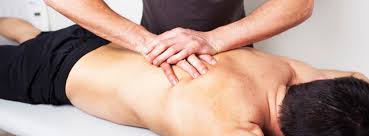After a hit-and-run, many victims in Queens are first treated in an emergency room. ER doctors do a great job handling immediate concerns—checking for fractures, stopping bleeding, or ruling out life-threatening injuries. But once the patient is discharged, the ER rarely provides ongoing care or the detailed records that insurance companies demand.
This is where no-fault doctors near Queens step in. Unlike ER physicians, they don’t just stabilize you; they create a roadmap for recovery. Their job is to manage your case long-term, ensuring you get the right treatment, whether that means diagnostic scans, specialist referrals, or pain management plans.
No-fault doctors also understand the paperwork side of recovery. Every exam, scan, and treatment is carefully documented in a way that satisfies insurance adjusters. This documentation proves that your injuries came from the accident and not from another source. Without this link, insurers often deny coverage.
Think of it this way: the ER is the starting line, but the no-fault doctor is your coach for the entire race. They guide you step by step until you’ve regained your health and secured the benefits you’re entitled to.
The Insurance Lifeline: Why Documentation Matters Most
Many Queens residents don’t realize that insurance companies scrutinize every medical claim. If your paperwork isn’t precise, your claim could stall—or worse, be rejected. That’s why documentation is just as important as treatment after a hit-and-run.
No-fault doctors specialize in building this paper trail. From day one, they:
- Record detailed notes about your injuries and symptoms
- Order diagnostic tests (MRIs, CT scans, X-rays) to back up your case
- Track progress over time, showing whether injuries improve or persist
- Provide referrals to specialists, proving the necessity of further treatment
For example, if you’re diagnosed with whiplash, the doctor won’t just note “neck pain.” They’ll record the severity of stiffness, range of motion loss, headaches, and related symptoms. This level of detail ensures insurers can’t dismiss your injury as “minor.”
In hit-and-run cases, where there’s no other driver’s insurance to lean on, your own insurer becomes the payer. They need proof, and no-fault doctors give them exactly that. Without their reports, even a strong claim can collapse under scrutiny.
Team-Based Care: The Specialists Who Work Together
Another advantage of seeing a no-fault doctor in Queens is access to a multidisciplinary care team. Instead of sending you to unrelated providers, these doctors coordinate everything under one umbrella.
A typical care team might include:
- Orthopedists for bone, joint, and ligament injuries
- Neurologists for concussions, migraines, or nerve pain
- Pain management doctors for injections or non-surgical relief
- Chiropractors for spinal alignment and whiplash recovery
- Physical therapists for strength training and mobility restoration
- Mental health specialists for anxiety or PTSD after the crash
This collaborative approach ensures nothing is overlooked. For instance, a patient with back pain might see an orthopedist to rule out fractures, then work with a chiropractor to correct spinal misalignment, and finally start physical therapy to rebuild strength.
The result? Faster recovery, less pain, and a stronger insurance case. Instead of piecing together care on your own, you have a built-in network of specialists who communicate with each other and share records.
The Emotional Toll of Hit-and-Runs—and How Doctors Help
The physical pain of a hit-and-run is obvious, but the emotional scars are often deeper. Victims frequently report feelings of anger, helplessness, and even fear of getting back on the road. Some develop symptoms of post-traumatic stress disorder (PTSD), including nightmares, flashbacks, or panic attacks when near traffic.
No-fault doctors in Queens recognize that recovery isn’t just physical—it’s mental too. During evaluations, they ask about sleep patterns, anxiety, and mood changes. If they notice signs of trauma, they refer patients to psychologists or psychiatrists who specialize in accident-related stress.
Why does this matter for recovery? Because untreated emotional trauma can slow down physical healing. A patient who avoids movement due to fear may worsen stiffness and pain. By addressing both body and mind, no-fault doctors give patients the best chance at a full recovery.
Moreover, documenting psychological symptoms strengthens insurance claims. Anxiety treatment, therapy sessions, and even medications can be covered under no-fault insurance if they’re tied to the accident. Without a no-fault doctor noting these issues, victims may miss out on benefits they truly need.
Choosing the Right No-Fault Doctor in Queens: What to Look For
Not all doctors are the same, and choosing the wrong one could jeopardize both your health and your claim. Here are qualities every victim should look for when searching for no fault doctors near Queens:
- Experience with Hit-and-Run Cases – Ask if they’ve treated similar patients and handled no-fault insurance before.
- On-Site Diagnostics – Clinics that offer MRIs, CT scans, and X-rays save you time and provide faster answers.
- Specialist Access – Look for clinics that coordinate with orthopedists, neurologists, and therapists under one roof.
- Bilingual Staff – In a diverse area like Queens, it helps when staff speak multiple languages for clear communication.
- Appointment Availability – Hit-and-run injuries can’t wait weeks. Choose a clinic with same-day or next-day appointments.
The right doctor isn’t just someone who treats pain—it’s someone who understands how to navigate insurance hurdles while putting your recovery first.
How Soon Should You See a No-Fault Doctor After a Hit-and-Run?
When it comes to hit-and-run accidents, timing can make or break your recovery—and your insurance claim. New York’s no-fault law requires that you file for benefits within 30 days of the accident. But waiting even a few days to seek medical care can raise red flags with your insurer.
Insurance companies often argue: “If you didn’t see a doctor right away, how serious could your injuries be?” This is especially risky with conditions like whiplash or concussions, which don’t always cause immediate pain. A delay of even a week can give adjusters an excuse to downplay your symptoms or deny coverage altogether.
That’s why experts recommend visiting a no fault doctor near Queens within 24 to 72 hours of the accident—even if you feel fine at first. Early medical records show a clear link between the crash and your injuries, leaving no room for doubt.
Think of it like documenting evidence at a crime scene—the sooner you collect it, the stronger your case. By acting quickly, you protect both your health and your right to benefits.
Legal Protection: How No-Fault Doctors Strengthen Your Case
Medical care isn’t the only reason to see a no-fault doctor after a hit-and-run—their reports can also serve as key legal evidence.
Here’s how:
- Detailed medical records prove that your injuries were accident-related.
- Ongoing progress notes show the lasting impact of the crash on your daily life.
- Specialist referrals demonstrate that your treatment was necessary, not optional.
- Imaging results (like MRIs) provide undeniable proof of internal injuries.
Personal injury attorneys in Queens often rely heavily on no-fault doctors’ documentation. Without it, building a case for fair compensation is nearly impossible. With it, victims have a stronger chance of securing benefits—not only from their insurer but also from possible crime victim funds or lawsuits if the driver is eventually caught.
In short, no-fault doctors aren’t just healers—they’re also silent witnesses on your behalf, providing the evidence you need to stand up to insurance companies and, if necessary, in court.
A Typical Patient Journey With a No-Fault Doctor in Queens
To better understand how these doctors work, let’s walk through a step-by-step recovery timeline for a typical hit-and-run victim:
- Day 1: Accident & ER Visit
- Patient is treated for immediate injuries like cuts, bruises, or possible fractures.
- Pain medication may be given, but no long-term plan is provided.
- Day 2–3: First Visit to a No-Fault Doctor
- Comprehensive exam and patient interview.
- Diagnostic tests such as MRI or X-ray ordered.
- Initial treatment plan created.
- Week 1–2: Specialist Referrals
- Patient sees a chiropractor for whiplash.
- Neurologist evaluates dizziness and headaches.
- Physical therapist begins mobility exercises.
- Month 1: Ongoing Treatment
- Pain management strategies (injections, medications) are introduced.
- Therapy sessions track both physical and emotional recovery.
- Month 3–6: Recovery & Documentation
- Continued monitoring ensures progress.
- No-fault doctor compiles medical records for insurance and legal use.
- Patient transitions from treatment to long-term wellness care.
This journey shows how no-fault doctors act as both treatment coordinators and insurance allies, ensuring no step of recovery is left unsupported.
Mistakes to Avoid After a Hit-and-Run Accident
Even with access to no-fault coverage, many victims in Queens unintentionally weaken their case by making avoidable mistakes. Some of the most common include:
- Delaying medical treatment – Waiting too long makes insurers doubt the seriousness of injuries.
- Skipping follow-up visits – Missed appointments are often used as proof that you’re fully recovered.
- Downplaying symptoms – Saying “I’m fine” when you’re not can result in incomplete medical records.
- Ignoring emotional trauma – Anxiety, depression, or PTSD should also be documented for coverage.
- Failing to file on time – Missing the 30-day no-fault deadline can disqualify you from benefits.
Avoiding these mistakes is simple if you work closely with a no fault doctor near Queens who knows how to guide patients through both medical recovery and insurance processes.
Conclusion
Being the victim of a hit-and-run accident is overwhelming—you’re left dealing with pain, uncertainty, and a sense of injustice. But Queens no-fault doctors provide a critical lifeline. They don’t just treat injuries; they help victims reclaim control over their health, finances, and future.
From identifying hidden injuries to coordinating specialist care, from documenting every detail for insurance claims to supporting emotional recovery, these doctors play a role that extends far beyond the exam room. They are both healers and advocates, ensuring victims aren’t left stranded after the driver who caused their injuries disappears.
If you or someone you love has been injured in a hit-and-run, don’t wait. Seeking out experienced no fault doctors near Queens can mean the difference between a denied claim and a full recovery—physically, emotionally, and financially.
FAQs
1. Do no-fault doctors in Queens treat emotional trauma as well as physical injuries?
Yes. Many work with psychologists or psychiatrists to address PTSD, anxiety, or depression caused by accidents.
2. What if my injuries seem minor after the accident?
You should still get checked. Hidden injuries like concussions or whiplash often show symptoms days later.
3. Can I switch doctors if I’m not satisfied with my current no-fault provider?
Absolutely. You have the right to choose or change providers at any point in your recovery.
4. Will my no-fault insurance cover physical therapy and chiropractic care?
Yes. As long as the treatments are accident-related and recommended by your no-fault doctor, they are typically covered.
5. Do I need a lawyer to see a no-fault doctor?
Not necessarily, but many victims benefit from having both. The doctor handles medical evidence while the lawyer manages legal claims


